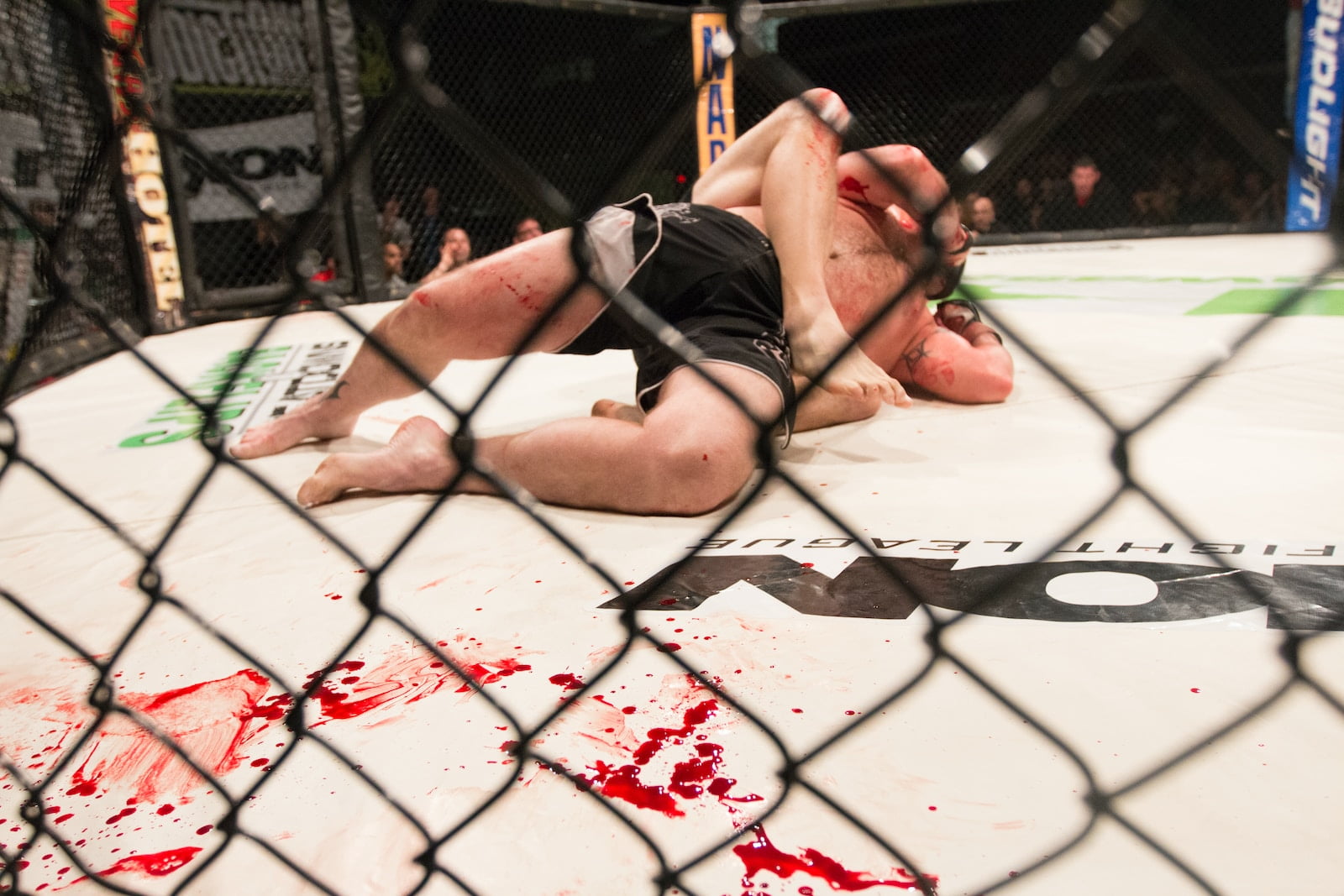Mixed martial arts (MMA) has rapidly gained popularity as a thrilling and engaging sport that showcases incredible athleticism and technical expertise.
However, as with any sport, there are certain rules and illegal moves that fighters must avoid in order to preserve the integrity and safety of the competition.
Some of these illegal moves include certain types of strikes, unsportsmanlike conduct, and fouls that can occur when a fighter is grounded.
Understanding and recognizing these illegal moves is crucial for both fighters and spectators, as these actions can lead to penalties, point deductions, or even disqualification.
While MMA encompasses a diverse range of combat styles and techniques, it is essential to strike a balance between an exciting spectacle and the safety of its participants.
By learning more about these illegal moves and the governing rules of MMA, you can gain a deeper appreciation for the strategies and tactics employed by fighters in the cage.
Key Takeaways
- Recognize the importance of adhering to MMA rules for fighter safety and fair competition
- Familiarize yourself with illegal moves, such as certain strikes and fouls against grounded opponents
- Enhance your understanding of MMA by learning about unsportsmanlike conduct and its consequences
Illegal Strikes
In this section, we will discuss some common illegal moves in MMA that are strictly prohibited due to the potential harm they can cause to fighters.
1. Head and Spine Attacks
Headbutts are among the most notorious illegal moves in MMA, as they can lead to severe head trauma and irreparable damage to a fighter.
In addition to headbutts, striking the spine is forbidden in MMA due to the risk of causing serious and potentially life-altering injuries.
2. Kicks and Knees
Kicks and knees to a grounded opponent’s head are considered illegal in MMA competitions.
These moves can cause significant harm and increase the chances of severe head injuries for the recipient.
3. Eye Gouging and Fish Hooking
Eye pokes or eye gouging are prohibited in MMA. This can happen unintentionally when a fighter maintains distance with their palms facing their opponent.
An eye poke can result in the fighter losing points or even disqualification if it is deemed severe enough.
Fish hooking, which involves inserting fingers into an opponent’s mouth and pulling, is also an illegal move due to the potential for causing unnecessary pain and injury.
4. Illegal Elbow Strikes
12 to 6 elbow strikes, also known as downward elbow strikes, are banned in MMA.
These moves involve striking an opponent from the 12 o’clock position to the 6 o’clock position and can cause significant damage to a fighter’s head and face.
5. Hair Pulling
Hair pulling is also considered an illegal move in MMA. This tactic can cause undue harm and inflict unnecessary pain on an opponent, making it an unacceptable move in professional MMA competitions.
As a fighter, it’s important to be aware of these illegal strikes and avoid using them during matches.
Abiding by the rules not only ensures a fair fight but also helps protect both you and your opponent from serious injuries.
Unsportsmanlike Conduct
6. Biting and Clawing
In MMA, unsportsmanlike conduct like biting and clawing is strictly prohibited.
These actions can cause unnecessary harm to your opponent and mar the integrity of the sport.
Fighters must maintain a neutral, professional demeanor in the ring, focusing on skillful techniques rather than resorting to dirty tactics.
Engaging in biting or clawing can lead to penalties or even disqualification from the match.
7. Groin Strikes and Attacks
Another form of unsportsmanlike conduct in MMA is targeting your opponent’s groin area.
Not only can groin strikes cause extreme pain, but they also have the potential to cause long-lasting damage.
As a fighter, you should always aim to employ legal, effective techniques in your bouts while respecting your opponent’s well-being.
Employing forbidden tactics like groin strikes or attacks can result in points deductions or more severe consequences, depending on the referee’s judgment.
8. Small Joint Manipulation
When competing in MMA, it’s crucial to refrain from using your skills in a malicious manner.
One example of this is small joint manipulation, which involves twisting or bending an opponent’s fingers or toes in an unnatural and potentially damaging way.
This approach is not only unsporting, but it can also result in debilitating injuries.
To maintain a fair and safe contest, small joint manipulation is banned, and employing it can lead to penalties.
9. Pinching
Lastly, while it might seem like a minor action, pinching is not tolerated in MMA.
This behavior is considered unsportsmanlike and clearly shows disrespect towards your opponent.
Pinching, while not necessarily causing injury, can be a source of irritation and distraction, unbecoming of a professional athlete.
Competitors caught pinching during a fight will likely face penalties, emphasizing the need always to conduct themselves with honor and respect in the ring.
Grounded Opponents and Fouls
Illegal Moves Against Grounded Opponents
In mixed martial arts (MMA), certain moves are considered illegal when performed against a grounded opponent.
A grounded opponent is any fighter with more than just the soles of their feet on the ground, such as having one shin or finger touching the ground.
Some of these illegal moves include:
- Headbutting: Deliberately using the head to strike the opponent.
- Soccer kicks: Kicking a downed opponent’s head with a motion similar to kicking a soccer ball.
- Knees to the head: Striking the opponent’s head with the knee while they are grounded.
- Strikes to the back of the head or neck: Intentionally targeting these vulnerable areas can result in significant injuries.
It is essential to know and abide by these rules to maintain fair and safe competition for all fighters involved.
Penalties and Disqualification
If a fighter commits a foul against a grounded opponent, the referee has the discretion to impose penalties.
The severity of the penalty often depends on the intent and the impact of the illegal move on the opponent.
In some cases, a warning may be issued for minor infractions or accidental contact.
In more serious situations, the referee may deduct points from the offender or even disqualify them from the contest.
In the event of a disqualification, the fighter committing the illegal move may face further consequences, such as suspension or being fined by the governing body.
Understanding the rules and being mindful of your actions in the ring will help you avoid fouls against grounded opponents and the potential penalties that may follow.
Remember, to compete successfully and safely in MMA, knowing and adhering to the rules is crucial.
By respecting your opponents and avoiding illegal moves, you can continue to enjoy the sport while protecting the well-being of all fighters involved.
Frequently Asked Questions
What are the consequences of using illegal moves in MMA?
Using illegal moves in MMA can lead to various penalties, ranging from point deductions to disqualifications.
Severe violations may also result in suspensions and financial penalties.
It is essential for fighters to understand and follow the rules to avoid compromising their performance and career.
Which grappling techniques are forbidden in MMA?
In MMA, certain grappling techniques are considered illegal due to their dangerous nature. Some examples include:
- Spiking, which involves slamming an opponent head-first into the mat
- Small joint manipulation, such as bending or twisting fingers
- Neck cranks that put excessive pressure on the cervical spine
Always ensure to follow the rules and focus on legal techniques for a safer and more enjoyable experience.
How are fouls determined and enforced in MMA?
Fouls in MMA are determined by the referee, who closely monitors the fight and intervenes when necessary.
If a fighter commits an illegal move, the referee may issue a warning or deduct points.
In cases of severe fouls or repeated violations, the referee may disqualify the offending fighter.
Why are certain wrestling moves considered illegal in MMA?
Certain wrestling moves are considered illegal in MMA due to the high risk of injury they pose to fighters.
Moves like headbutting, eye pokes, and knee kicks to the opponent’s thigh can cause significant harm or long-term damage.
These moves are prohibited to ensure safety and fair competition for all participants.
What are the key differences between legal and illegal wrestling moves in MMA?
Legal wrestling moves in MMA allow fighters to demonstrate their skills and techniques in a safe and controlled environment.
Illegal moves, on the other hand, pose a significant risk of injury and can compromise the integrity of the sport.
By adhering to the rules and avoiding illegal moves, you can improve your performance while minimizing the risk of injury to yourself and your opponents.


